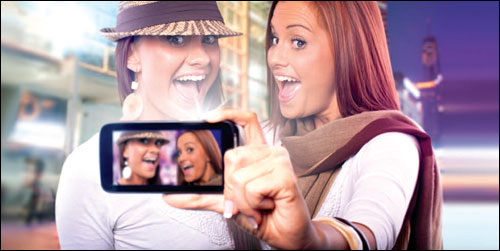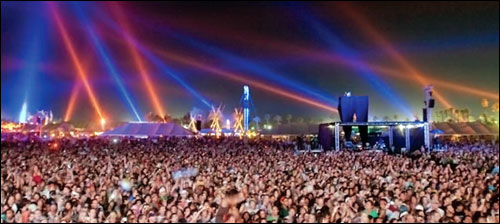For the 2010 ski season, Vail Resorts, which operates five popular U.S. mountain resorts, introduced EpicMix, a platform allowing visitors to use social-media tools to connect with each other, as well as track and share their ski or snowboard metrics online. This pioneering effort was made possible by radio frequency identification transponders in ski badges, and it’s been a big hit. Since then, more companies and organizations have been using RFID to link consumers’ real-world activities to social- media sites, so participants can share their experiences.
During this summer’s Olympics, in London, Cadbury, a division of Kraft Foods, held an event in Hyde Park that included an RFID-enabled social-media application created by dwinQ. Visitors to the company’s Cadbury House could view an exhibit of its chocolate-making history, play interactive games, sample its confections—and share their experiences and photographs with friends and family on Facebook, by means of a hands-free passive ultrahigh-frequency RFID system. Roughly 3,500 people visited Cadbury House each day during the Olympics.
Smirnoff, a division of the British beverage company Diageo, has been promoting its vodka products at a series of events that enable guests to share their activities with friends on Facebook, using an RFID-enabled token. The solution, provided by Fish Technology and managed by social-media firm Blondefish, has been used at nightclubs in Belgium, Ireland and Germany during the past year as part of the company’s Nightlife Exchange Project and Battle of the Clubs programs. Guests have updated their pages with comments about their locations and activities, along with photos of themselves and friends partying at particular clubs.
This year, thousands of participants in Susan G. Komen 3-Day walks are sharing their progress during the events with friends and family via an RFID solution, provided by Qnectus, that links them to their Facebook pages. Participants in the United States, who walk to raise money and awareness about breast cancer and early detection, receive RFID-enabled ID cards attached to lanyards, which they wear around their necks. As they begin their walk, an RFID-enabled station captures their information and displays an online message, such as “Today I start my 60-mile journey! Three days! Making an impact in the fight to end breast cancer.”
It’s not clear that companies and organizations get a hard return on investment from using RFID for social-media purposes, but that’s not the point. The goal is to engage people with a cool new technology and have them promote a product, cause or event to others. And it appears to work. In 2010, Coca-Cola held a series of 10 festivals, known as Coca-Cola Village, in Israel. Most of the 6,500 teens who attended the events used RFID technology to share their experiences with friends and family through Facebook. The Coca-Cola Village Facebook page became the most popular page in that country, with some 650,000 daily post views.
Look Who’s Jumping on the Social-Media Bandwagon
Activision
Last year, at a two-day live-action gaming event to celebrate the launch of the video game Call of Duty: Modern Warfare 3, an RFID system enabled players to post their performance, as well as images taken of them on the course, to their Facebook pages.
www.rfidjournal.com/article/view/8921
Centre Pompidou
The Teen Gallery at the art museum, in Paris, invites young visitors to share their experiences with friends. Teens are given mobile phones with Near-Field Communication (NFC) technology, which they can wave near posters and exhibits equipped with NFC tags to gain information. The phones also can be used to post comments about the artwork, as well as videos of the artists, on Facebook and MySpace.
www.rfidjournal.com/expert/entry/7262
Coachella Festival (pictured above)
At the music and arts festival, which ran for two weekends in April, in Coachella, Calif., guests were issued RFID wristbands to gain entrance, as well as to access parking, camping and shuttle buses. More than 30,000 attendees registered for Live Click, which let them use their wristbands to update their Facebook status at portals positioned at key areas around the festival site.
www.rfidjournal.com/article/view/9524
Great Wolf Lodge
Guests at Great Wolf Resorts, located throughout North America, can use their RFID wristbands to connect to their Facebook pages. The Great Wolf Connect application lets them automatically share photographs taken by the various digital cameras throughout the indoor water parks.
www.rfidjournal.com/article/view/8569
Hyundai, Nestlé Philippines and Nike Korea
At an event, show or exhibition, U-Like, developed by UbiU Holdings, lets individuals quickly and easily share their experiences and photos with friends on Facebook and Twitter. The application has been used at Hyundai’s AutoRAI motor show, in Amsterdam; Nestlé’s Nestea Beach volleyball finals, in the Philippines; and Nike’s The Chance soccer talent hunt, in Korea.
www.rfidjournal.com/article/view/9749



